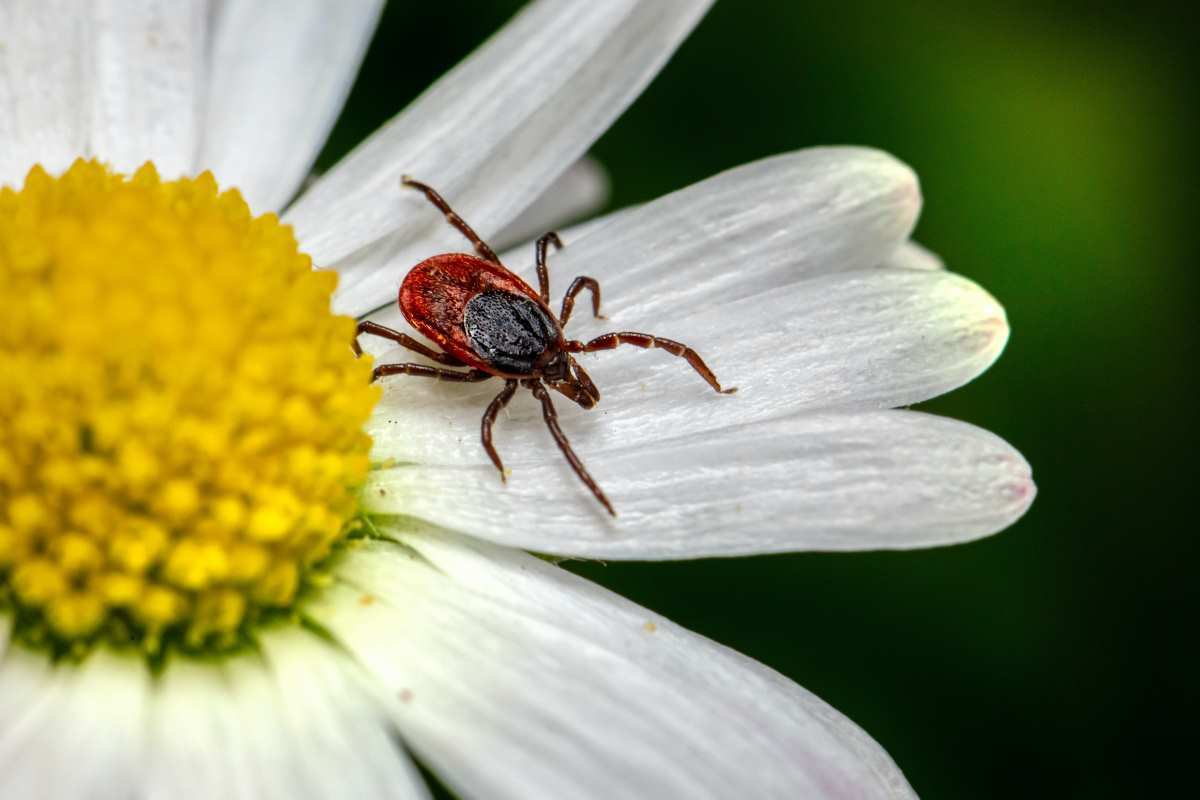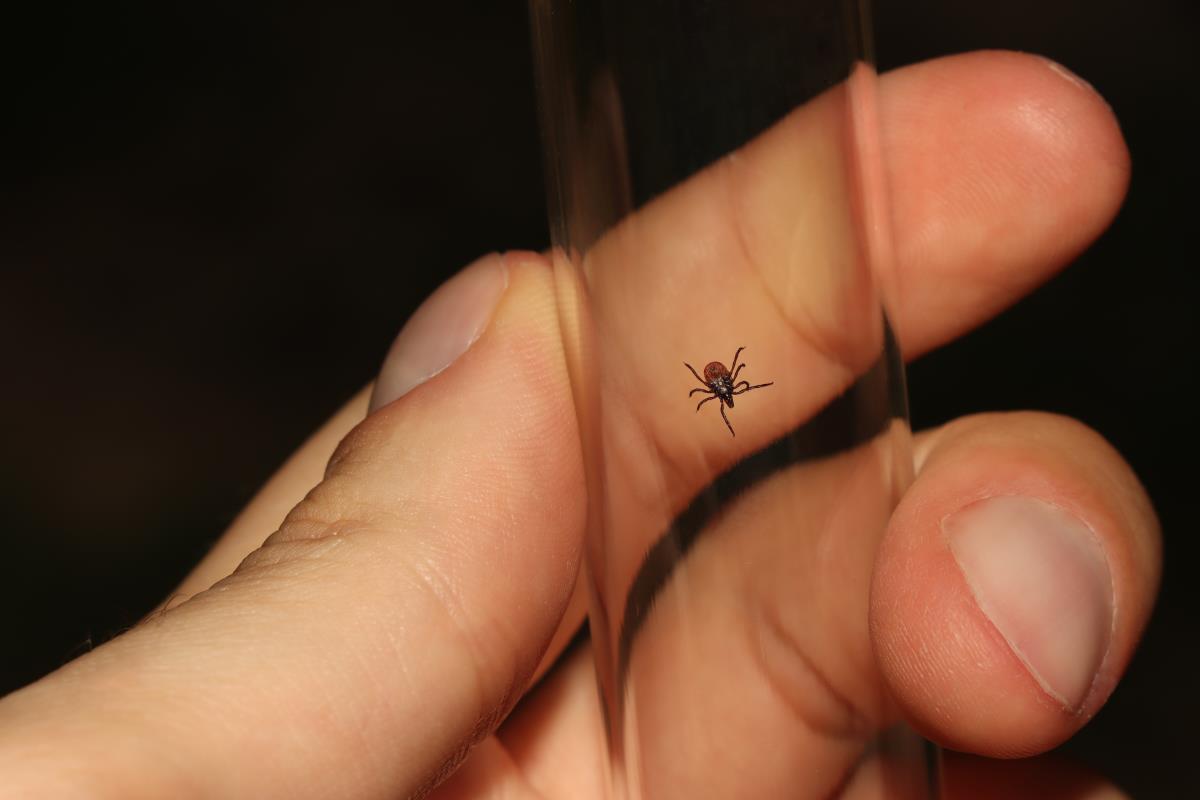7 Misconceptions About Ticks Busted
Reading time: 5 minutesCreepy crawly ticks clambering all over your lawn and invading your home sounds like a nightmare for many. Because ticks can carry disease and cause panic, it’s little wonder there are so many myths about them.
Some myths can be dangerous and lead to significant harm or ineffective treatments. Fortunately, we’ve got the facts to help you understand these myths, so let’s debunk seven common misconceptions about ticks.
Tick Myths That Aren’t True
A lot of tick misinformation can expose you to greater risk and cause unnecessary stress because you’re not sure what’s true. That’s why it’s so important to understand the facts.
Once you have a clear understanding of misinformation, you can commit to tick prevention that will actually stop ticks in their tracks.
1. All Ticks Carry Lyme Disease
While a tick bite is no fun, not all ticks carry Lyme disease. The tick that bites you will need to carry the bacteria Borrelia burgdorferi or the bacteria Borrelia mayonii (though this bacterial strain is rarely the culprit) to cause Lyme disease.
The usual culprit is the black-legged or deer tick. However, other ticks can also spread the disease if fed on blood containing the bacteria.
When a black-legged tick bites you, it’s essential to keep an eye on the bite mark and check yourself for the tell-tale symptoms of Lyme. If you begin experiencing severe headaches, fatigue, nausea, and develop a fever (usually within 3 to 30 days after the bite), you should consult your doctor immediately to receive a prescription for the appropriate antibiotics.
Don’t leave Lyme disease untreated, as it can cause an infection affecting your joints and heart, causing permanent damage.
2. Ticks Die in the Winter
A common myth is that ticks die in winter, so you don’t need tick protection in the colder months. Ticks don’t always die in winter, and it takes some severe cold (-2℉ to 14℉ or -18°C to -10°C) for a tick actually to die. In general, you can expect that the tick population will only decrease by about 20%.
Ticks become less active when the weather is cold because it makes them more lethargic. You'll still want to take precautions since they aren’t entirely out of commission.
For example, if your family uses a real tree for Christmas, the pests can hitch a ride if you aren’t careful. This is because ticks like to burrow into organic material during the winter, leaving you to find them in trees, firewood, leaves, and soil, trying to keep warm.
3. Ticks Can Jump or Fall from Trees onto You
Unlike popular beliefs, ticks aren’t able to fly, jump, or abseil down from a tree onto you. Instead, ticks crawl onto you from the ground, where they spend most of their time. This means that if you find a tick on your upper body, it crawled up your body from your legs.
Typically, you’ll find ticks in tall grasses or brush. They’ll wait to hop on and hitch a ride when you or an animal pass by. These arachnids also tend to hang out in areas where animals, like deer, are prevalent. Keep an eye out for these areas when you spend time outside to avoid spreading ticks (especially deer ticks).

4. A Bite Equals Immediate Illness
If a tick bites you and you don’t feel ill within a matter of hours, it doesn’t mean you won’t get sick. For example, Lyme disease can take 3 to 30 days before symptoms start.
Other bacterial pathogens transmitted in a tick bite can take a few hours to affect you, though the average time needed for a tick to transmit disease-carrying pathogens is a 24-hour bite window.
This bite window means the tick must latch on and actively feed for a prolonged period. You won’t always know how long a tick has been feeding on you. Ticks may latch on, feed for a few minutes, then get moved by your body’s movements, causing them to move off and feed on another juicy spot.
As a rule: Treat all tick bites seriously, and monitor yourself carefully for signs that the tick transmitted a bacteria or other nasty pathogen. However, remember that not all tick bites cause disease, and just because a tick has bitten you doesn’t mean you need to rush to the ER.
5. You Can Spot Ticks Easily
It’s not easy to spot all species of ticks. The early stages of life for a tick make it particularly difficult to spot them. In the nymph stage, ticks can even be the size of a poppy seed.
Obviously, it’s much easier to see a tick after it’s spent some time feeding and has become bloated. But even then, it’s not the easiest thing. Sometimes it will be best to have someone else check you for ticks.
6. All Removal Methods Are Created Equal
One of the most harmful myths about ticks is how to remove them. You don’t want to leave a tick on your body for an extended period because it can become far more toxic. The best way to remove ticks is to do so as fast as possible without leaving any part of the tick embedded in your skin.
Below, we’ve covered some ways you shouldn’t try to remove these bloodsuckers.
Burning
If you find a tick attached to you, avoid burning it. When removing a tick, your goal should be to get rid of it quickly, not just get it to detach. Introducing heat can cause more harm than help and may cause the pest to regurgitate its stomach contents, making a bite worse.
Smothering a Tick is the Way to Go
Another popular folk remedy is using nail polish, oil, or Vaseline to paint over the tick and bite area. The goal is to smother the tick and get it to detach from the skin. When this happens, the tick does experience discomfort and can cause more harm instead of just letting go.
Pulling the Tick off by Hand
Removing a tick with your fingers should be avoided whenever possible. When you grab these arachnids by hand, you risk causing the tick to regurgitate stomach contents. Using your fingers is also inadvisable because you can’t grip the tick as close to its head as you need to for effective removal.

7. Wearing Long Pants Is Enough to Prevent Ticks Biting Me
For years, many of you have heard that you should wear long pants outside to avoid ticks getting onto your skin and biting. Unfortunately, this isn’t true. You can still pick up unwanted passengers, even with jeans or long hiking pants.
However, you can do several things to ensure better protection when wearing long pants. Tucking your pants into socks and your shirt into your pants gives you more protection since ticks cannot reach your skin as easily. It may also be helpful to wear lighter-coloured pants, as they will help you see any ticks better.
How Do You Remove Ticks Safely?
The best way to safely remove ticks is to use a set of sharp-nosed tweezers that you can position on either side of the tick’s head and firmly pull the tick straight out of the skin. You want the tweezers to be as close to the skin’s surface as possible. This gives you the best chance of cleanly removing the tick with its head and mouth parts intact.
Once you’ve removed that tick, it’s important to dispose of it properly. There are a few methods that you can follow, including:
- Placing it in alcohol.
- Flushing it down the toilet.
- Securing it in a sealed container.
Once the tick is taken care of, you should clean the area around and on the bite, then monitor for any issues. Contact a health provider if you notice swelling or other abnormal skin responses.
Prevention Is Better than Cure
Avoid ticks by protecting your yard before they can infiltrate it. Preventative treatments offer safety from pests of all kinds, including the disease-causing ticks in Canada. With BuzzBoss, you can ensure your home and property remains tick-free. Our exterior treatments prevent ticks from entering your yard, reducing your chances of being bitten.
Ready for tick protection? Talk to the pest control experts today for your free consultation, and get back to enjoying your outdoor spaces!

